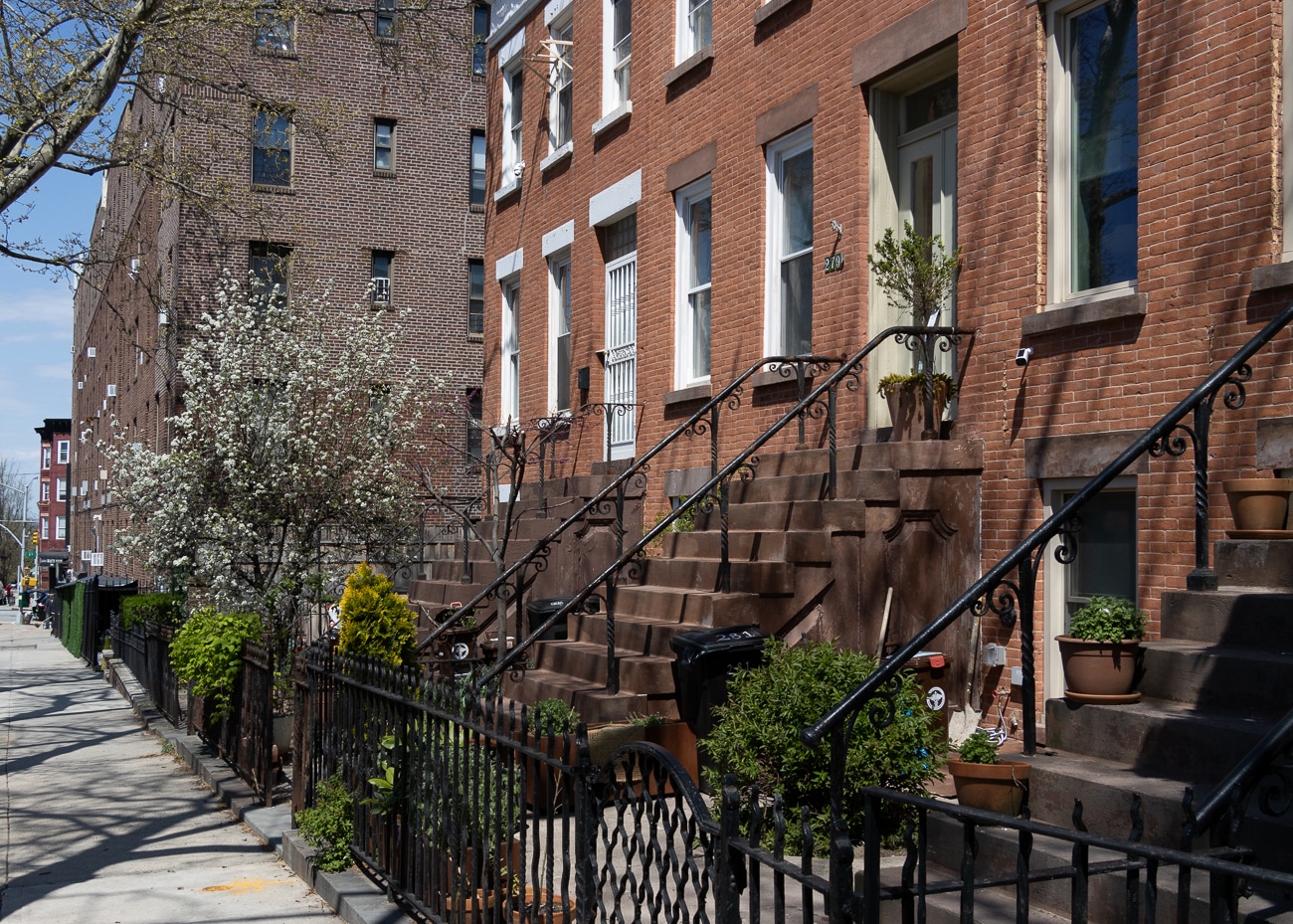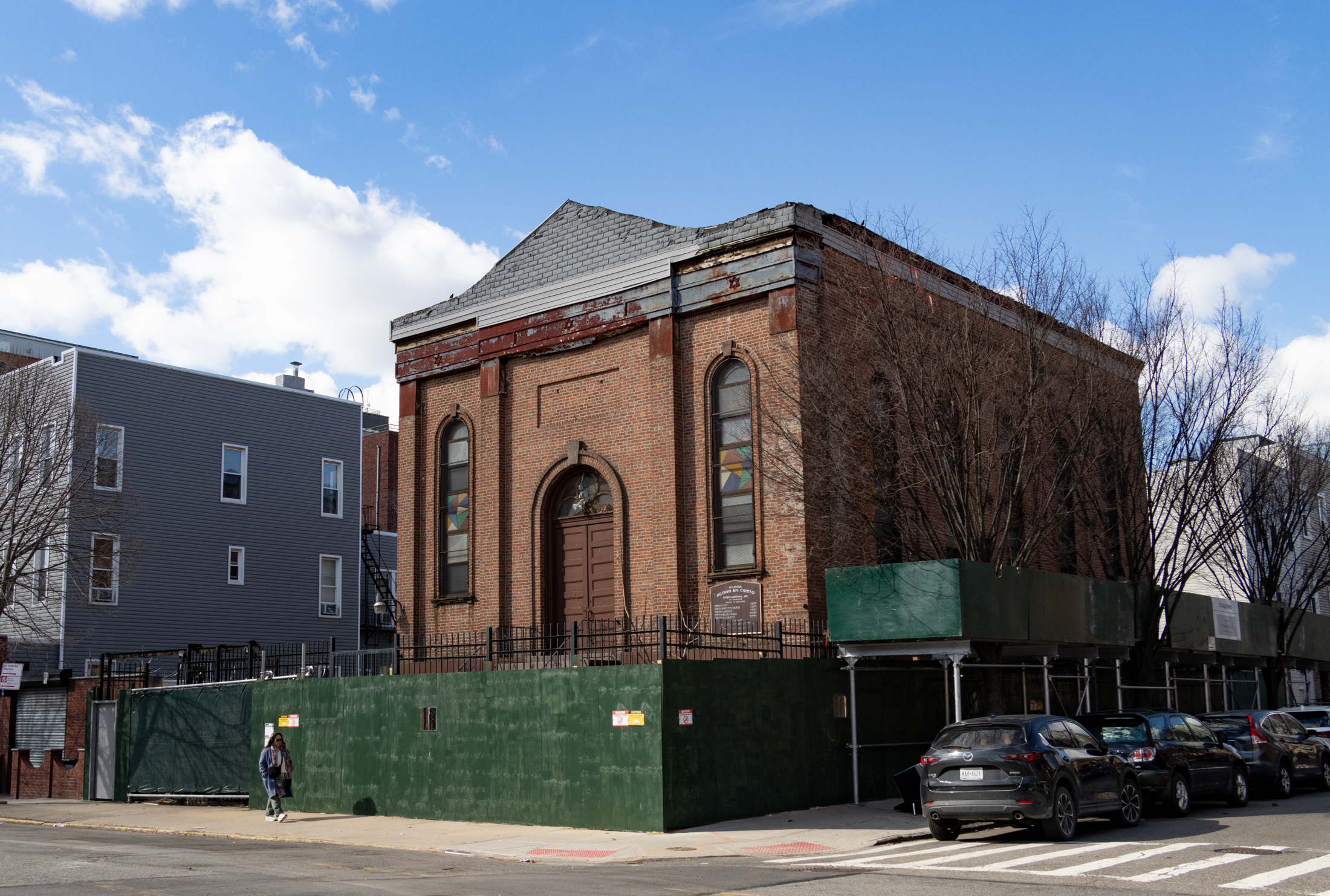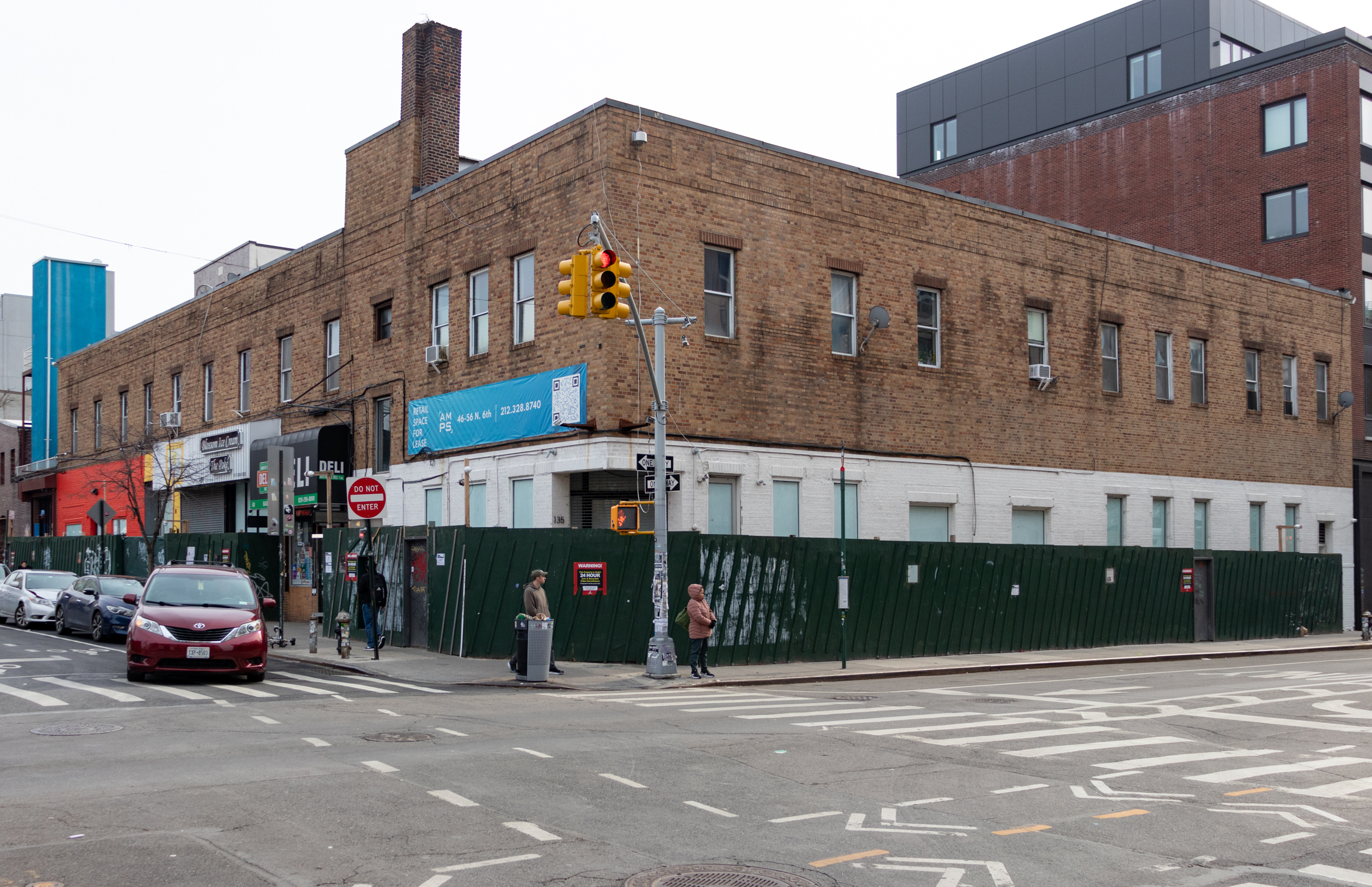Building of the Day: 270 Union Avenue
(Photo: Scott Bintner for Property Shark, 2006) Brooklyn, one building at a time. Name: Former Colored School Number 3 Address: 270 Union Avenue Cross Streets: Stagg and Scholes Streets Neighborhood: Williamsburg Year Built: 1879-1881 Architectural Style: Rundbogenstil Romanesque Revival Architect: Samuel B. Leonard Other buildings by architect: PS 9, Prospect Hts, PS 65 and PS…

(Photo: Scott Bintner for Property Shark, 2006)
Brooklyn, one building at a time.
Name: Former Colored School Number 3
Address: 270 Union Avenue
Cross Streets: Stagg and Scholes Streets
Neighborhood: Williamsburg
Year Built: 1879-1881
Architectural Style: Rundbogenstil Romanesque Revival
Architect: Samuel B. Leonard
Other buildings by architect: PS 9, Prospect Hts, PS 65 and PS 39. He designed 40 schools for the Brooklyn School system in total.
Landmarked: Yes, Individual landmark, 1998
The story: This is the last of Brooklyn’s Colored School buildings, a bricks and mortar reminder of segregated public education in the city. Brooklyn and later, greater New York City, has a very interesting history in this regard, and this small, but elegant little building played a part in that story.
Brooklyn’s free black communities tried as far back as 1815 to establish schools for ex-slaves and freemen alike. In 1816, the city of Brooklyn established its Common School System, and black students were taught in the same buildings as white students, but in separate rooms. By 1827, these spaces were taken away from them, prompting Henry P. Thompson, Brooklyn’s first black businessman, and Abraham Brown to open the first African Free School. Ten years later, another Free School was opened in Carrsville, next door to Weeksville, and that school was absorbed into the Brooklyn public school system in 1841.
In 1845, the state legislature established that cities and municipalities had to create a “separate but equal” school system for black children. In Brooklyn, the Board of Education absorbed all of the African Free Schools, calling them “Colored Schools”, and provided funds to build two new schools, called Colored Schools, Numbers 1 and 2, and later, this one, Colored School # 3. Very long story short, by 1898, when greater NYC was created, laws were passed to end segregated schools, although it would take many years before that happened in actuality.
Colored School #3 was born of the African Free School of Williamsburgh, established in 1841. By 1868, the school, which had been taken over by the Williamsburgh District School system in 1844, had grown so much that they moved three times into larger facilities, settling at last in this location. Samuel B. Leonard was the Superintendent of School Buildings at this time, and in 1868, he declared that the old building was too decrepit to continue to be used. The Board of Ed ignored his request, he brought it up again in 1877, with community support, and at last, in 1879, he was granted funds to build the school.
He liked the Rundbogenstil German form of Romanesque Revival architecture popular in the neighborhood, and built this handsome little brick school. In many ways it resembles the Rundbogenstil l style office building of the Ulmer Brewery, designed by Theobald Engelhardt, who designed most of the buildings Leonard was seeing in Williamsburg at the time. The classic closed arched brickwork design is a Rundbogenstil signature. The school had four classrooms and seated around 220 students. Many important African-American educators were teachers and administrators at the school over the years.
Colored School #3 became PS 69 when the school system reorganized, but it remained effectively segregated until it became an annex of nearby PS 18. In 1924, it became an independent school, PS 191, but in 1934, the school system closed the school and gave the building to the Public Works Commission, which used the building during the Depression for WPA projects. After the Great Depression, the building was given to the Sanitation Department.
Like most city-owned buildings that are no longer in use, the building was closed up, abandoned, and left to crumble at will. Fortunately, in 1983, the building was purchased by James O. Clark and his wife, Linda. They were both artists looking for space to live and created their art. When they purchased the building, the windows were broken, and paint was peeling from the brick, but it was perfect for their needs. They transformed the interior into studio and living space, and live there still. Today, it’s a wonderfully restored piece of Brooklyn with an important past and a viable future. GMAP











What's Your Take? Leave a Comment